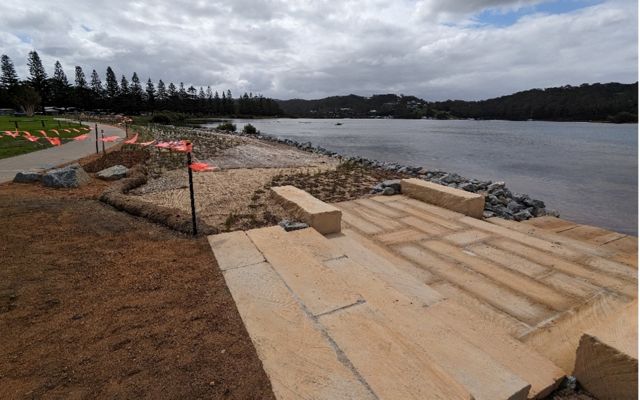
Reef Builder: Restoring Australia's lost shellfish reefs
The unique reef restoration of Wagonga Inlet
A Reef Builder project
‘Narooma’ is the Indigenous Yuin word for 'clear blue waters'. A fitting title for a place overflowing with underwater landscapes. Landscapes like pristine beaches, rocky shores with dense kelp forests, sweeping lakes and the stunning Wagonga Inlet at the heart of it all.
Countless wildlife also calls Narooma’s idyllic waters home, with the iconic Port Jackson sharks, stingrays and fur seals often spotted.
The history of Wagonga Inlet
Narooma NSW has always been rich with natural wonders. It's idealic beaches and abundant wildlife draw people to this seaside haven. The placid blue waters of Wagonga Inlet make for the centrepiece of this coastal tourist attraction.
Shellfish reefs fell into decline
Like much of Australia, the area was once also the home of extensive shellfish reefs. After years of over exploitation, pollution, introduced species and disease, these shellfish reefs mostly disappeared.
The Wagonga Inlet "Living Shoreline"
The foreshore of Ken Rose Park in Wagonga Inlet consisted of a failing seawall and badly eroding banks up until 2023 when this project began.
To remedy this, TNC has partnered with the Eurobodalla Shire Council, NSW Department of Primary Industries (DPI) Fisheries and the Australian Government. Together we have built shellfish reefs in the Wagonga Inlet and have reshaped the foreshore to create a ‘living shoreline’.
The ‘living shoreline’ uses a combination of natural vegetation elements and bank reshaping techniques to prevent erosion and rehabilitate this erosion hotspot. This is the first restoration of its kind in Australia.
Living shorelines offer a natural defence against shoreline erosion that can adapt to conditions under projected sea-level rise.
A unique reef
The Wagonga Inlet reef is a truly unique project: it is the first intertidal oyster reef on the NSW South Coast and the first subtidal oyster reef for the state. It is also the first ‘living shoreline project’ in the whole of Australia that combines oyster reef and saltmarsh restoration with bank stabilisation and public amenity features.
Construction of the intertidal and subtidal shellfish reefs was completed in June 2022. A 1,700 m2 intertidal Sydney Rock Oyster reef was built using both locally quarried rock and oyster shells. Intertidal shellfish reefs are inundated on high tide and are exposed, out of the water, during low tide. This elevation range between low and high tide is the natural home for Sydney rock oysters.
A further 1,000m2 of subtidal native flat oyster reef habitat was created on the seafloor of the nearby ‘Deep Hole’. These subtidal shellfish reefs are more than 3 meters deep and remain underwater during all tide stages.


The reefs are coming back to life
Monitoring since late 2022 has shown fantastic natural oyster recruitment for the intertidal reefs. Underwater video monitoring by NSW DPI Fisheries has also documented great fish diversity and abundance in the Australian Flat Oyster reefs as well.
It doesn't stop here
Whilst the monitoring frequency naturally changes as the restored reef bases become settled, the reefs are still monitored for changes.
For more information on the achievements of the Reef Builder initiative, read the 2024 Reef Builder Final Summary Report.
Read more:

